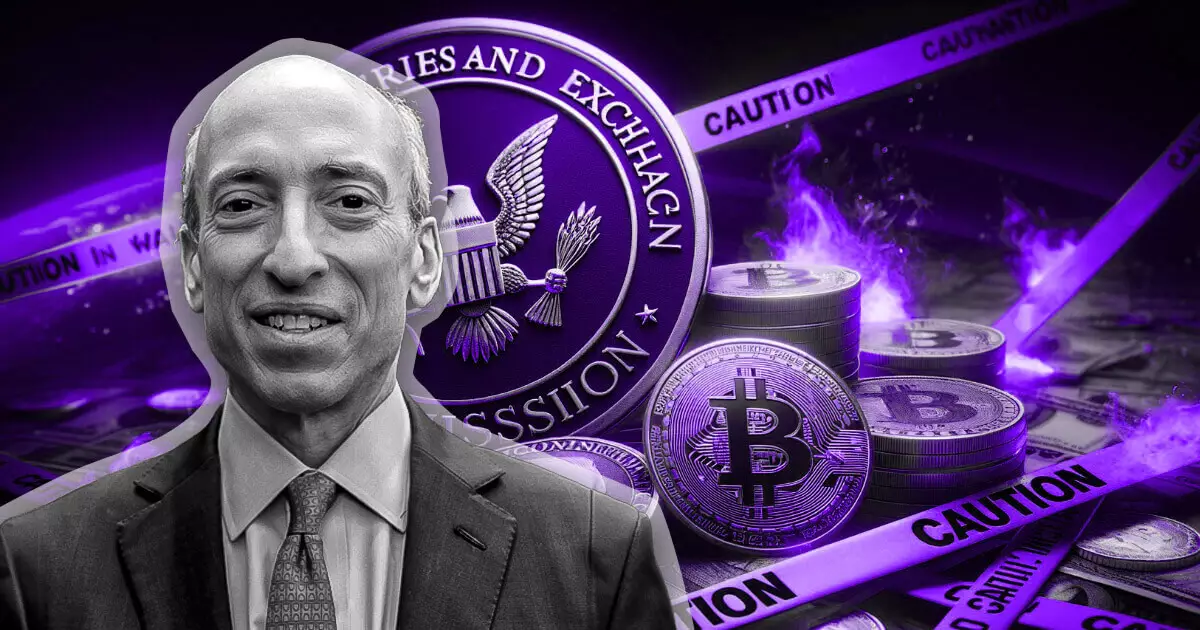In a recent appearance on CNBC’s Squawk Box, Gary Gensler, the Chair of the US Securities and Exchange Commission (SEC), reaffirmed a key regulatory distinction: Bitcoin is not a security. This statement carries significant weight in the ongoing discourse surrounding cryptocurrency regulation, particularly given the historical context of the SEC’s scrutiny over the digital asset market. Gensler made it clear that both he and his predecessors have consistently categorized Bitcoin as a commodity, a classification that entitles it to a regulatory framework distinctly different from securities like stocks or bonds.
The clarity surrounding Bitcoin’s legal status comes on the heels of the SEC’s approval of numerous spot Bitcoin exchange-traded funds (ETFs), facilitating greater market access and mainstream adoption. This development signals a significant step toward acceptance of Bitcoin within traditional financial frameworks, allowing it to be traded on major exchanges like Nasdaq. Nevertheless, the regulatory backdrop for other cryptocurrencies remains murky, prompting questions about how future regulations will shape the digital asset landscape.
Gensler did not shy away from criticizing the broader cryptocurrency market for its perceived lack of adherence to established regulations. He expressed concern that many participants appear to bypass compliance, opting instead to seek exemptions from existing rules. This trend, according to Gensler, has fostered an environment riddled with instability and confusion, which, in turn, risks the integrity of the market.
He emphasized that robust regulatory measures are vital to ensure that investors have the protections they need, warning that a lack of compliance can severely undermine trust in the entire cryptocurrency ecosystem. The ongoing challenge for regulators is to find a balance that allows innovation to flourish while also enforcing strict adherence to the legal framework established to protect investors.
While Bitcoin enjoys a more defined regulatory position, Ethereum’s classification remains notably ambiguous. The SEC has not explicitly categorized Ethereum as either a security or a commodity, leaving projects operating on its blockchain in a state of scrutiny and uncertainty. Despite this confusion, the approval of Ethereum-based ETFs indicates a complex relationship between innovation and regulatory compliance.
The SEC’s investigations into firms associated with the Ethereum ecosystem, such as Uniswap and Consensys, further complicate matters. Lawmakers have voiced their frustrations with Gensler’s approach, suggesting that his regulatory tactics have inadvertently stifled innovation within the space. Critics argue that the lack of precise definitions, exemplified by terms like “crypto asset security,” adds to the existing confusion rather than clarifying the regulatory landscape.
Despite the criticism directed at his regulatory methods, Gensler maintains a steadfast belief in the necessity of strong regulations to foster investor confidence and long-term market stability. He draws parallels between the evolution of the cryptocurrency industry and the development of traditional sectors, asserting that regulations function as essential tools—akin to traffic lights—that guide industry growth.
The contrast in regulatory clarity regarding Bitcoin compared to the uncertainty surrounding Ethereum and other digital assets leaves the future of the broader cryptocurrency market hanging in the balance. To cultivate a thriving ecosystem, regulators must engage in dialogue with industry participants, navigating the fine line between ensuring compliance and fostering innovation. In doing so, the SEC can help create a more stable environment conducive to the growth and acceptance of cryptocurrencies within the financial world.



Leave a Reply